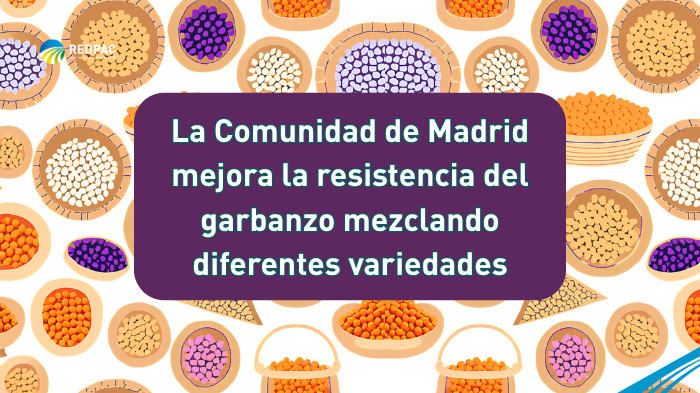
01 de April de 2025
Cambio climático y gestión de recursos naturales
Calidad y cadena alimentaria
Resiliencia y competitividad
The mixture of chickpea varieties increases its resistance to adverse weather conditions.
- The mixture of chickpea varieties increases its resistance to adverse weather conditions.
- The cultivated area of the region has increased from 800 hectares to 1,200 in just 1 year.
The Community of Madrid is revolutionizing chickpea cultivation through innovative initiatives led by the Madrid Institute for Rural, Agricultural, and Food Research and Development (IMIDRA) . This project seeks not only to improve chickpea characteristics and their benefits for the soil but also to promote their consumption in local cuisine.
Over the years, IMIDRA has worked to offer more sustainable and profitable agricultural solutions. At the Madrid Fusion International Gastronomy Congress , a key breakthrough in research on chickpea variety blends was presented.
Main actions of IMIDRA
Traditionally, the chickpea varieties grown in the Madrid region have been: Amelia, Amparo, Elvira, Alcazaba, Eulalia, Inmaculada, Pilar, Lola, and Carmen. Based on these, IMIDRA bases its research on the following factors:
- Experimentation with chickpea blends to optimize yield and improve soil health, allowing this legume to adapt to seasonal climatic variations and take advantage of water resources.
- Recovery of traditional varieties such as vetch, fenugreek, and carob, which had disappeared from local cultivation for more than 50 years.
- Introduction of new varieties such as black and brown chickpeas - provided by the Plant Genetic Resources Center of the Higher Council for Scientific Research - which have a higher content of minerals and bioactive compounds, as well as greater resistance to diseases and adverse conditions.
Benefits
The cultivation of chickpeas and the use of these techniques have generated agronomic and environmental benefits:
- Improved soil structure and promoted biodiversity due to this legume's ability to fix nitrogen, facilitating more sustainable agriculture.
- The diversity of blends allows for unique nutritional and organoleptic profiles that can vary from year to year, adding versatility to the final product.
- Optimizing resources and improving profitability under low-input conditions through innovative techniques such as crop rotation.
The implementation of these methods has allowed the cultivated area in the Community of Madrid to increase from 800 hectares in 2023 to 1,200 in 2024 .
Gastronomic impact
Chickpeas also have enormous potential to be harnessed in modern gastronomy. This is why the Gastronomic Innovation Center (CIG) has been able to develop more than 90 culinary applications with chickpeas, from sauces to dairy alternatives, and have produced high-value-added products such as the crispy Madrid chickpea, patented in 2021.
New techniques and the recovery of traditional varieties not only improve sustainability and productivity in the field, but also open up new opportunities to develop innovative food products. This integrated approach reinforces the region's commitment to a production model that benefits both the environment and the local economy, connecting scientific knowledge with culinary creativity.









